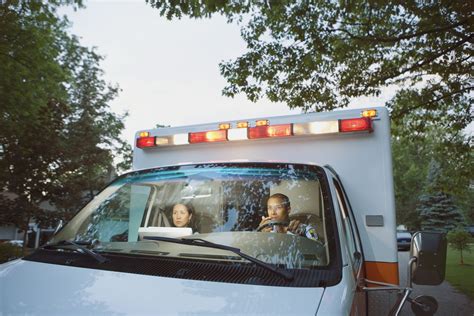Ambulance drivers are responsible for transporting sick or injured people to and from hospitals or other medical facilities. They often work in fast-paced, high-stress environments and must be able to make quick decisions.

What Does an Ambulance Driver Do?
Ambulance drivers perform a variety of tasks, including:
- Driving the ambulance to and from medical facilities
- Assisting medical personnel with patient care
- Monitoring patients’ vital signs
- Communicating with medical personnel and other emergency responders
- Operating specialized medical equipment
- Maintaining the ambulance and its equipment
Who Can Become an Ambulance Driver?
No formal education is required to become an ambulance driver, but most employers require applicants to have a high school diploma or equivalent. Some employers may also require applicants to have a valid driver’s license and a clean driving record.
How to Become an Ambulance Driver
There are a few different ways to become an ambulance driver. One option is to enroll in an ambulance driver training program. These programs typically last for several weeks and cover topics such as:
- Basic life support
- First aid
- Patient handling
- Ambulance operations
Another option is to apprentice with an experienced ambulance driver. This involves working under the supervision of an experienced driver and learning the ropes on the job.
What are the Qualities of a Good Ambulance Driver?
Good ambulance drivers have a variety of qualities, including:
- Compassion
- Empathy
- Patience
- Teamwork skills
- Communication skills
- Problem-solving skills
- Decision-making skills
- Physical fitness
What are the Benefits of Being an Ambulance Driver?
There are a number of benefits to being an ambulance driver, including:
- The opportunity to help people in need
- A sense of purpose
- Job security
- Competitive salary and benefits
- Opportunities for advancement
What are the Challenges of Being an Ambulance Driver?
There are also a number of challenges associated with being an ambulance driver, including:
- Long hours
- Stressful work environment
- Exposure to traumatic events
- Physical and emotional demands
- The risk of injury or death
Conclusion
Ambulance drivers play a vital role in the healthcare system. They are responsible for transporting sick or injured people to and from medical facilities and providing them with compassionate care. If you are interested in a career in healthcare and you are looking for a job that is challenging and rewarding, then becoming an ambulance driver may be the right career path for you.
Keywords
- Ambulance driver
- EMS
- Emergency medical services
- Paramedic
- EMT
Tables
| Table 1: Ambulance Driver Salaries | Table 2: Ambulance Driver Education Requirements | Table 3: Ambulance Driver Certification | Table 4: Ambulance Driver Job Outlook |
|---|---|---|---|
| Median annual salary: \$32,670 | High school diploma or equivalent | Nationally recognized certification | 11% growth expected from 2020 to 2030 |
| Top 10% annual salary: \$55,830 | Some employers may require additional training | Renewal required every few years |
Effective Strategies for Ambulance Drivers
- Be prepared for anything. Ambulance drivers never know what they will encounter on the job, so it is important to be prepared for anything. This means having a thorough understanding of medical procedures and being able to think on your feet.
- Stay calm under pressure. Ambulance drivers often work in high-stress environments, so it is important to be able to stay calm under pressure. This will help you to make clear decisions and provide the best possible care to your patients.
- Communicate effectively. Ambulance drivers need to be able to communicate effectively with medical personnel, other emergency responders, and patients. This includes being able to give clear instructions, answer questions, and provide reassurance.
- Work as a team. Ambulance drivers often work as part of a team, so it is important to be able to work well with others. This means being able to cooperate, share information, and support each other.
Tips and Tricks for Ambulance Drivers
- Get to know your route. The more familiar you are with your route, the faster and more efficiently you will be able to transport patients.
- Be aware of your surroundings. Always be aware of your surroundings and be prepared to adjust your route if necessary. This will help you to avoid accidents and delays.
- Take breaks when you need them. It is important to take breaks when you need them to avoid fatigue and burnout. This will help you to stay alert and focused on your job.
- Stay positive. Ambulance drivers often deal with difficult situations, so it is important to stay positive and focus on the good that you are doing. This will help you to maintain a positive attitude and provide the best possible care to your patients.
Pros and Cons of Being an Ambulance Driver
Pros:
- Helping people in need
- Sense of purpose
- Job security
- Competitive salary and benefits
- Opportunities for advancement
Cons:
- Long hours
- Stressful work environment
- Exposure to traumatic events
- Physical and emotional demands
- Risk of injury or death
